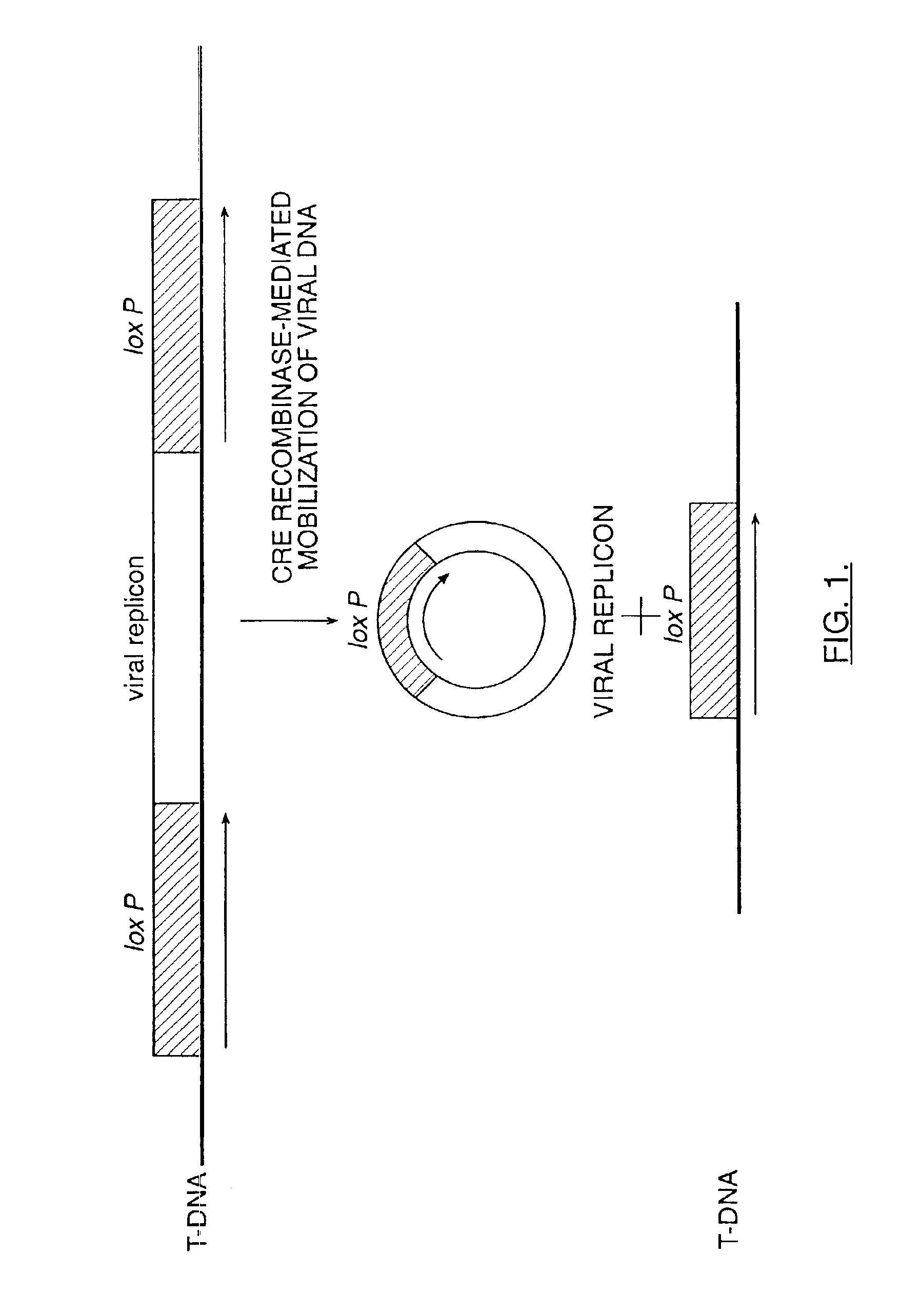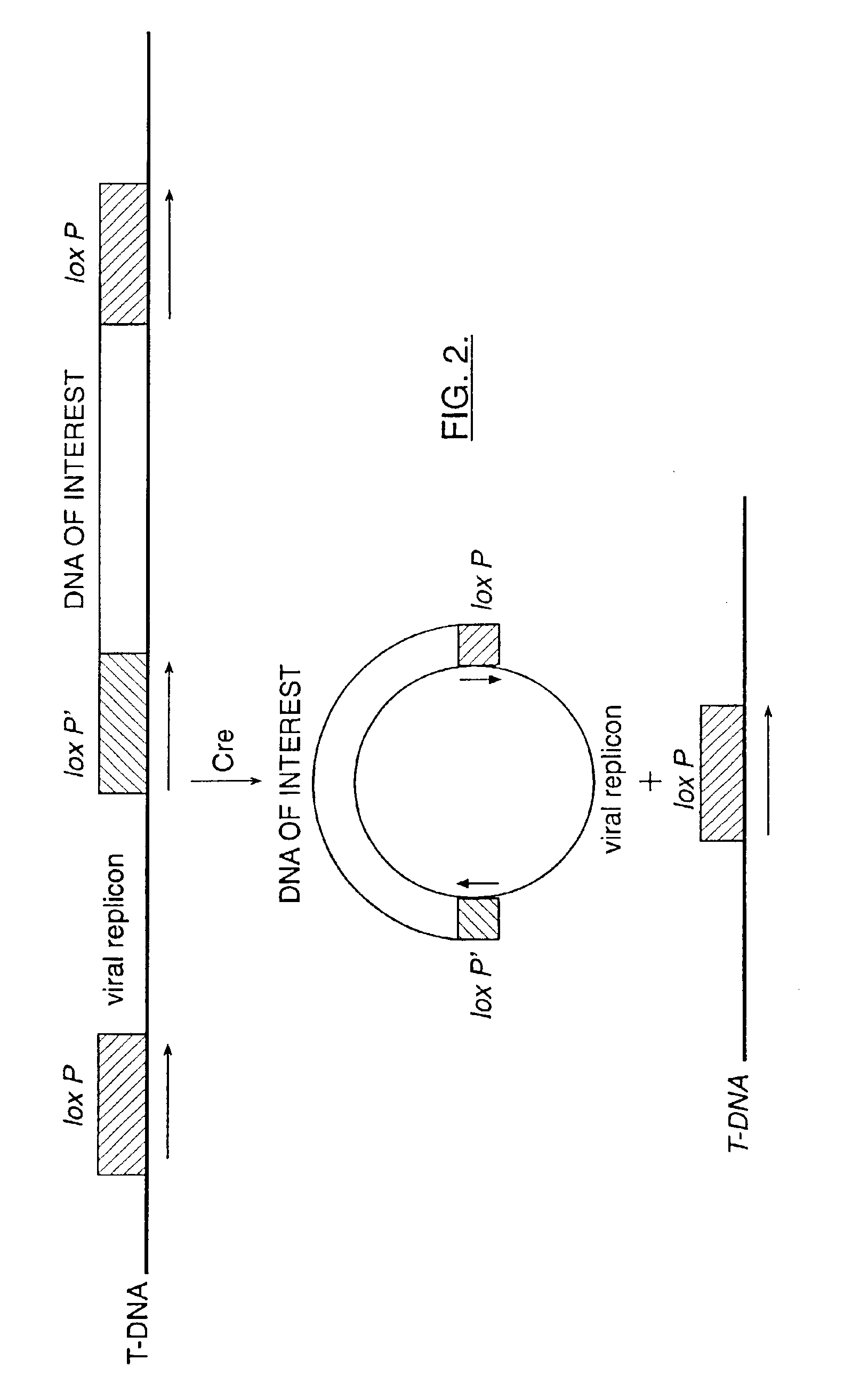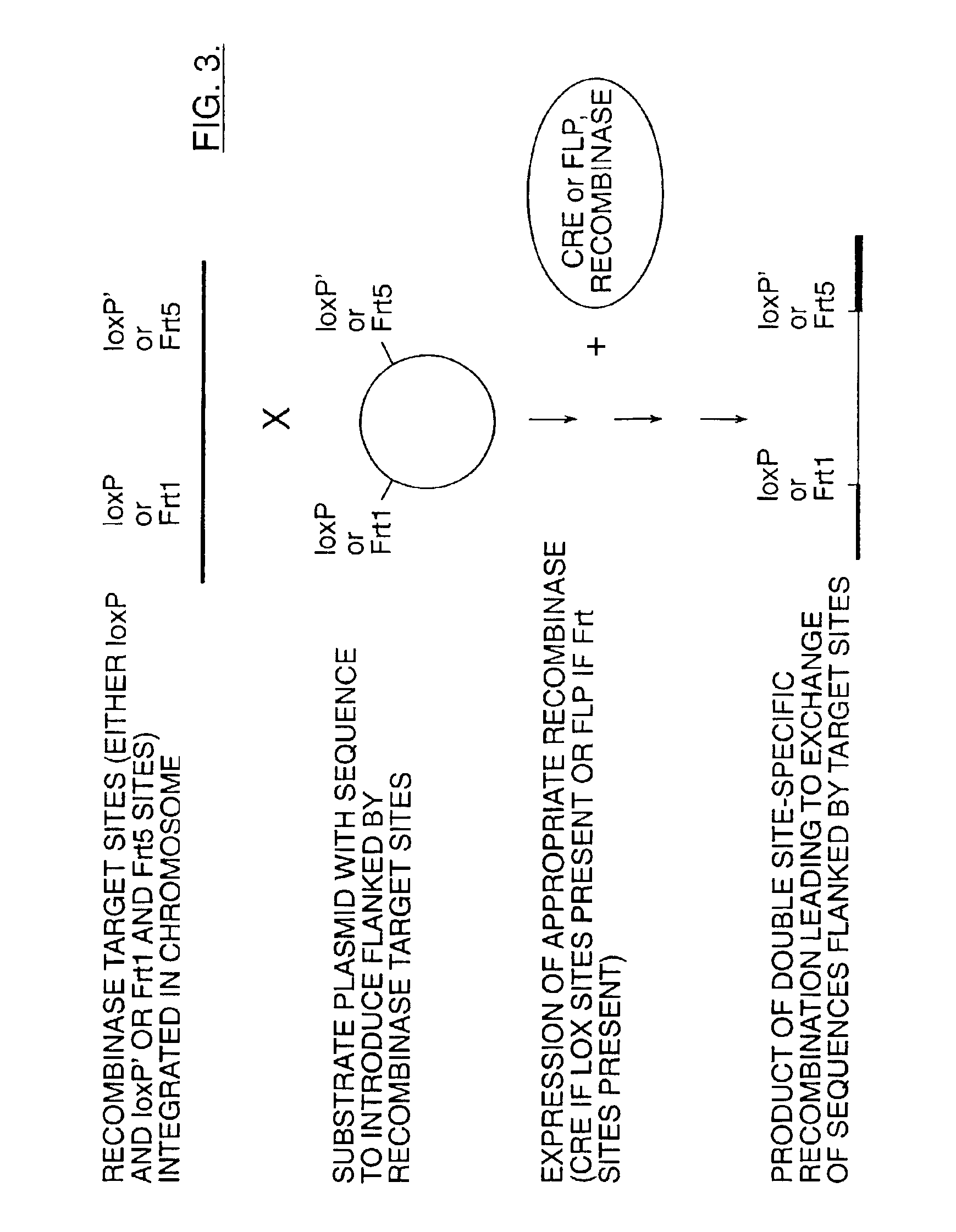Mobilization of viral genomes from T-DNA using site-specific recombination systems
a site-specific recombination and viral genome technology, applied in the field of plant molecular biology, can solve the problems of unstable recombination-competent host cells, difficult to construct tandem dimers of viral dna, and the inability to mobilize viral vectors from t-dna via site-specific recombination, etc., to achieve the effect of improving the efficiency of agroinfection, simplifying the construction and maintenance of vectors
- Summary
- Abstract
- Description
- Claims
- Application Information
AI Technical Summary
Benefits of technology
Problems solved by technology
Method used
Image
Examples
example 1
Construction of T-DNA Vectors Containing Viral DNA Flanked by Site-Specific Recombination Sites
[0079]DNA fragments containing viral DNA flanked by FRT or loxP site-specific recombination sites are constructed either by synthesizing, annealing and ligating complementary oligonucleotides or by creating primers for PCR amplification of a DNA product containing the FRT or loxP site and restriction sites useful for cloning into T-DNA near the 5′ end of the PCR product.
[0080]For example, long PCR primers may be designed wherein the 3′ end of the primer hybridizes to the 5′ end of the viral genome of interest and the 5′ end of the primer further contains a loxP site and useful cloning sites (see FIG. 5). The resulting PCR product is digested with the appropriate restriction enzyme and inserted into the T-DNA of an Agrobacterium binary vector as described by Bevan, M. (1984) Nucl. Acids Res. 12:8711-8721; herein incorporated by reference. An expression cassette for Cre is also inserted into...
example 2
Transfer of T-DNA to Dicotyledonous Plant Cells
[0081]Nicotiana tabacum BY-2 cells are propagated in Murashige and Skoog medium (Gibco BRL) containing 3% sucrose, 1 μg / ml thiamine, 0.2 μg / ml 2,4-D, and 370 μg / ml KH2PO4. Zea mays Black Mexican Sweet (BMS) cells are propagated in Murashige and Skoog medium containing 2% sucrose, 2 μg / ml 2,4-D, 0.2 mg / ml myoinositol, 0.13 mg / ml L-asparagine, 0.13 μg / ml nicotinic acid, and 0.25 μg / ml each of thiamine, pyridoxine, and pantothenic acid. The cultures are shaken at 140 rpm at 25° in continuous light.
[0082]To infect plant cells, virulence (vir) gene activity is induced by treatment with acetosyringone in Agrobacterium carrying the vector constructed in Example 1. Agrobacterium cells are grown to a density of 2×109 cells per ml (A=100, using a Klett-Summerson spectrophotometer, red filter) in AB-sucrose medium. The cells are centrifuged at 10,000g, suspended at a concentration of 1×109 cells per ml (A=50) in induction medium (AB salts, 0.5% gl...
example 3
Transfer of T-DNA to Monocotyledonous Plants
[0083]Prior to inoculation, strains of Agrobacterium carrying the vector constructed in Example 1 are streaked out on YEB (Grimsley et al.(1986) Proc. Natl. Acad. Sci. USA, 83:3282-3286) plates solidified with 1.5% agar and supplemented with 100 μg / ml rifampicin and 25 μg / ml kanamycin and allowed to grow for 48 h. A single colony is used to inoculate 10 ml of liquid YEB medium in a 100 ml Erlenmeyer flask supplemented with antibiotics as previously. Growth is continued with shaking at 200 r.p.m. for 24 h, then 500 μl of this culture is used to inoculate a similar flask and growth continued for a further 20 h. This procedure yields a final density of viable Agrobacterium cells in the region of 109 / ml (estimated by plating). The cells are then harvested by centrifugation and resuspended in an equal volume of 10 mM MgSO4 without antibiotics; such a suspension is subsequently referred to as undiluted or 10° dilution; for experiments involving ...
PUM
| Property | Measurement | Unit |
|---|---|---|
| diameter | aaaaa | aaaaa |
| diameter | aaaaa | aaaaa |
| distance | aaaaa | aaaaa |
Abstract
Description
Claims
Application Information
 Login to View More
Login to View More - R&D
- Intellectual Property
- Life Sciences
- Materials
- Tech Scout
- Unparalleled Data Quality
- Higher Quality Content
- 60% Fewer Hallucinations
Browse by: Latest US Patents, China's latest patents, Technical Efficacy Thesaurus, Application Domain, Technology Topic, Popular Technical Reports.
© 2025 PatSnap. All rights reserved.Legal|Privacy policy|Modern Slavery Act Transparency Statement|Sitemap|About US| Contact US: help@patsnap.com



